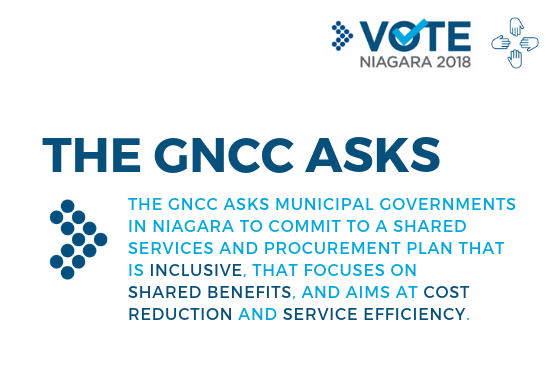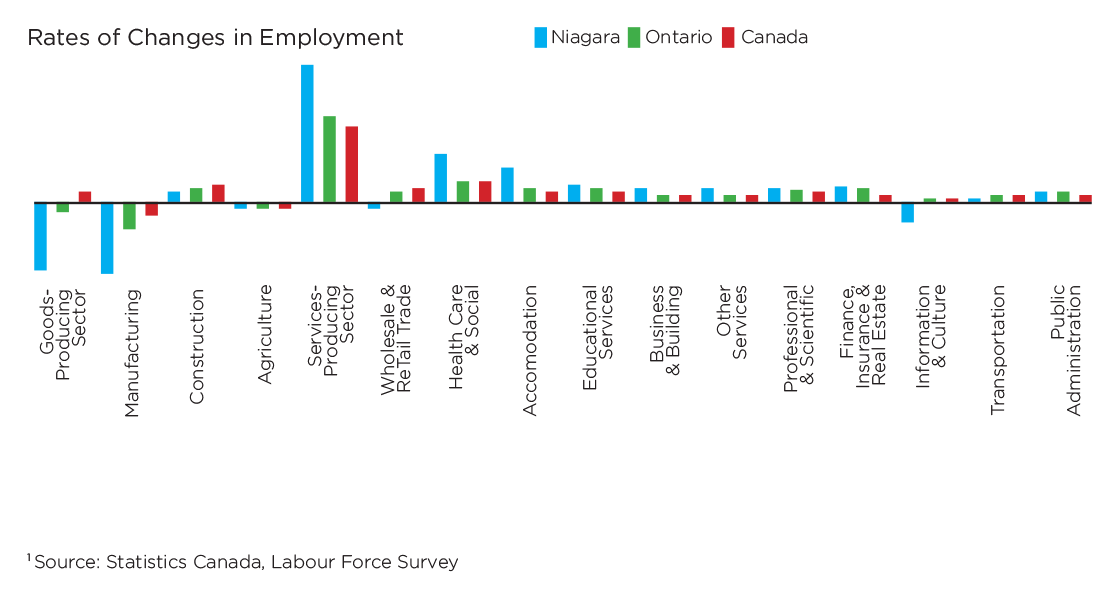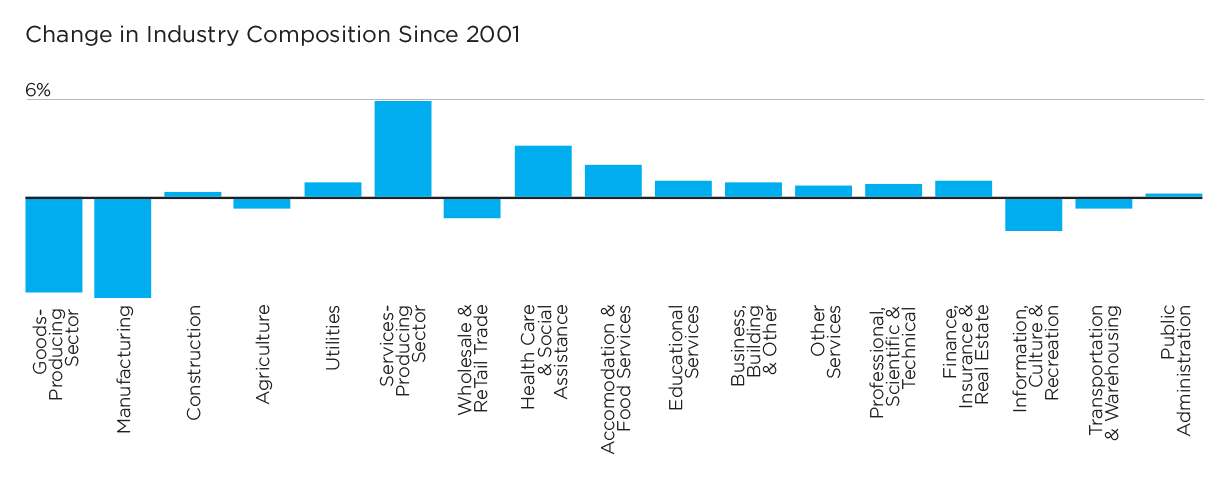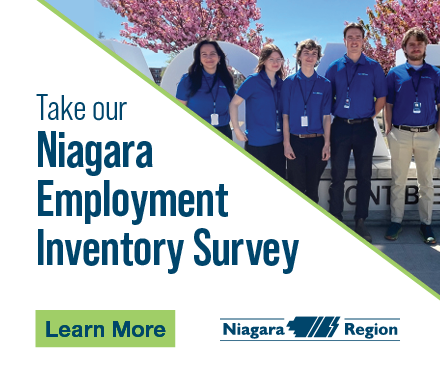❯ Harmonization
 Niagara is stronger and does better when we work together. The common theme of this pillar of our platform is encouraging Niagara’s governments to work together to realize cost-savings, efficiencies, and better service delivery. Cooperation goes beyond the economies of scale that can be realized when negotiating, for instance, one large contract instead of half-a-dozen smaller ones. It means sharing best practices between communities, so technologies and concepts that one municipality uses to reduce cost and improve services can be adopted by all. It means utilizing resources to our best advantage by unifying departments and reducing overlap. It means optimizing and harmonizing regulations and permits across the region to encourage businesses outside Niagara to come here, and those already in Niagara to grow and expand, including beyond their original locations. We believe that these proposals are realistic for the next term of government and can also form useful steps on the road to greater and more ambitious plans for harmonization in the longer term.
Niagara is stronger and does better when we work together. The common theme of this pillar of our platform is encouraging Niagara’s governments to work together to realize cost-savings, efficiencies, and better service delivery. Cooperation goes beyond the economies of scale that can be realized when negotiating, for instance, one large contract instead of half-a-dozen smaller ones. It means sharing best practices between communities, so technologies and concepts that one municipality uses to reduce cost and improve services can be adopted by all. It means utilizing resources to our best advantage by unifying departments and reducing overlap. It means optimizing and harmonizing regulations and permits across the region to encourage businesses outside Niagara to come here, and those already in Niagara to grow and expand, including beyond their original locations. We believe that these proposals are realistic for the next term of government and can also form useful steps on the road to greater and more ambitious plans for harmonization in the longer term.
Economic Development
Niagara needs to attract new industries and employers, and to help those that are here grow their businesses. Without strong job growth, we cannot attract a greater population; without strong job growth, we cannot support people who would come to Niagara, and without population growth, long-term prosperity is difficult to achieve.
We need to attract the right kinds of employers and industries. Niagara has made up for losses in the goods-producing sector with gains in services, especially wholesale and retail trade, and healthcare and social assistance1. However, to be healthy, we need a diverse base of industries. Although we can build on our strengths in tourism, in agriculture, or in healthcare, we must also strive to attract industries in which we have not built such a notable presence, such as information, culture and recreation.
We must also be aware of changes in industries and plan for them accordingly. The graph below shows how the composition of Niagara’s industrial landscape has changed since 2001. The decline of manufacturing relative to the overall Niagara economy will not be surprising to many; although Niagara continues to be a leader in Ontario as a manufacturer, automation and technology have replaced 85% of manufacturing jobs in north America and will continue to do so. The harsh effects of fierce online competition on retail trade can also be seen, as the importance of local shops as employers in the larger economy has declined.
To attract the industries and the firms Niagara needs to grow and to diversify, we need a single, complementary strategy, and the support to turn our plans into reality. Niagara has so much to offer employers and businesses. Our challenge is to let the world know what we have and to market ourselves as the region to do business in. Niagara’s economic development departments must work as a single body and must be funded at a level that makes us competitive with comparable regions in Ontario. To do anything less would squander our competitive advantage and fail to capitalize on our strengths.
Shared Services
Municipal services are growing more expensive, and municipal governments across Ontario are under increasing pressure to tighten budgets. Serious consideration of all means to reduce municipal budgets without compromising on or reducing services must be given. Sharing services between municipalities may help achieve that goal. For instance, the municipal governments of Niagara run a collective twelve fire departments, some no more than volunteer-only. Many public transit services are simultaneously run in the region, and most municipal procurement is done on an individual basis.
A potential example that could be used as a model for Niagara is the Municipal Partnering Initiative (MPI), consisting of 18 northern Cook County and Lake County municipalities in Illinois. Under this model, subcommittees were formed to evaluate and write bid specifications for groups of services and commodities such as public works and construction, with staff supplied by partnering communities. The unique needs of each community were preserved by adopting group bid specifications in partnership and then allowing communities to opt in or out of the resulting specification, which still required each community to challenge the mantra of “this is the way we’ve always done it.”
Total savings in the first five years of the program, over more than thirty joint bids, were between $2.5 and $3.1 million USD. The model can be replicated and deployed in virtually any area.
Beginning with a core group is easier, but can often feel exclusive and although it is easier to get a cooperative program off the ground with a small group, that same approach can endanger its expansion. We encourage an effort towards shared services and procurement to begin with all twelve Niagara municipalities and the Region, and that all municipal governments have an opportunity to contribute to the development of the process. The project must involve both staff and elected officials.
The GNCC asks municipal governments in Niagara to commit to a shared services and procurement plan that is inclusive, that focuses on shared benefits, and aims at cost reduction and service efficiency.
Permits and Fees
There are thirteen municipal governments in Niagara, and any business here must work with at least four governments at various levels. The cost of permits and fees, when not set optimally, can be a deterrent to doing business in any community. It is imperative that these costs be seen not only as a revenue-generator for municipal government, but as a tool with which the government can influence planning in desirable ways. They must also be seen as one of many costs to local businesses. Low fees can offset high property taxes, or vice versa, but a municipality which charges expensive fees and high taxes is stymieing its growth and prosperity.
Communities should remain free to use fees and taxes as tools to encourage the types of growth their citizens deem desirable, but to truly encourage growth, communities should also ensure that their fee and tax structures are coordinated with each other, particularly between the Region and the other twelve municipal governments. A liaison group or committee with representation from all municipal governments should take responsibility for ensuring the coordination of permits and fees, ensuring that staff in their respective municipalities are in communication and cooperation when determining these, and that decisions are not being made in isolation.
The GNCC asks municipal governments in Niagara to commit to harmonizing permits and fees across the region to enable and empower economic growth and development, and to create and staff a liaison body that will power this harmonization.
Best Practices
Across Niagara, municipal governments are discovering new and improved ways to run their affairs, saving taxpayers money and delivering enhanced services. Recent examples might include Welland and Thorold’s memorandum of understanding for joint purchasing, or Niagara Falls using a new pothole patching material with a greatly increased lifespan. When municipal governments discover such practices, they should be shared and adopted by others to spread the benefits to all of Niagara. While each government publicizes its achievements in this regard, there should be a more active component in sharing this information and aiding the adoption of these practices. The thirteen municipal governments should create a best practices commission with staff dedicated to actively sharing and implementing best practices across Niagara’s municipalities.
Red Tape and Business Services
While residents across Ontario, Canada, and the world feel the frustration when government services fall short of the ideal in speed and ease-of-use, it is when dealing with businesses that these shortfalls have tangible results that result in slower economic growth and job creation. Some municipal governments in Niagara have announced efforts to cut red tape and to hire expediters for government services, particularly to businesses. It is time to take that policy to the next level.
Municipal governments should hire staff to expedite projects, applications, and development, and develop new and improved concierge services for businesses and non-profits. Additionally, government should adopt the “No Wrong Door” philosophy from charitable and non-profit organizations, i.e. if the wrong government department or staffer is contacted regarding an issue, they should not rebuff the inquirer or consider their involvement at an end until the inquirer has been successfully put in touch with the right department or staffer, and communications are proceeding.
[ssba]
Latest News
New Community Centre Opens In Partnership With the Niagara Region to Positively Impact Children, Youth and Families in St. Catharines
The YMCA of Niagara celebrated the grand opening of its newest centre of community impact located within the Fairview Mall… more »
Daily Update: July 25 2024
In this edition: Town of Grimsby launches grant program for local community St. Catharines changes fee schedule, deleting two and… more »
Daily Update: July 24 2024
In this edition: Bank of Canada delivers interest rate cut, overnight rate now 4.5% Government of Ontario invests $73M to… more »






